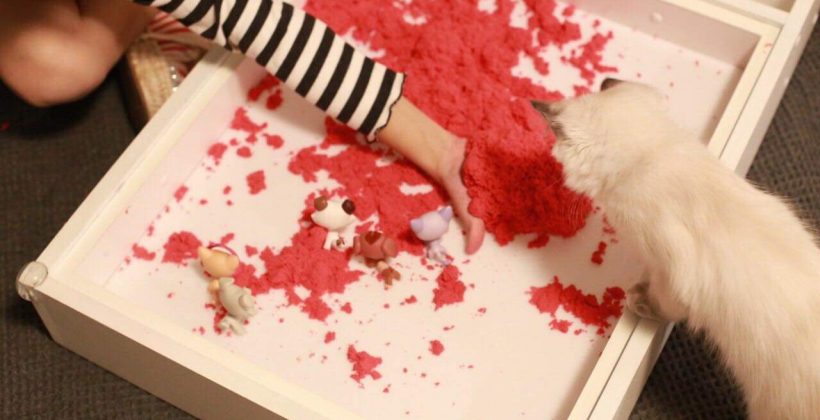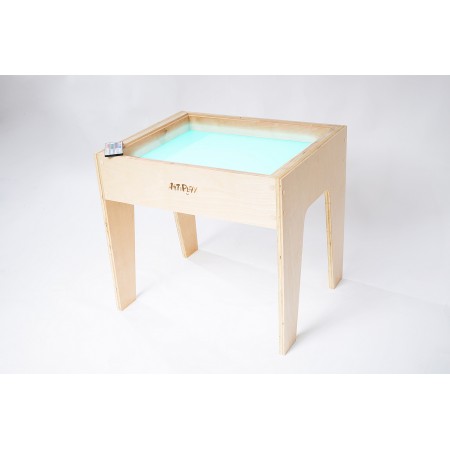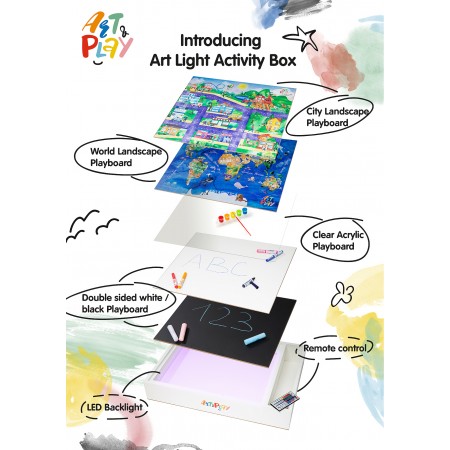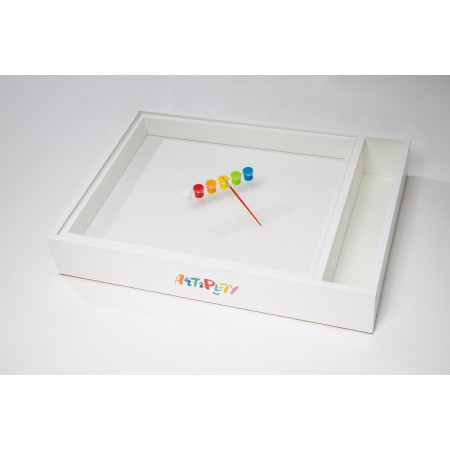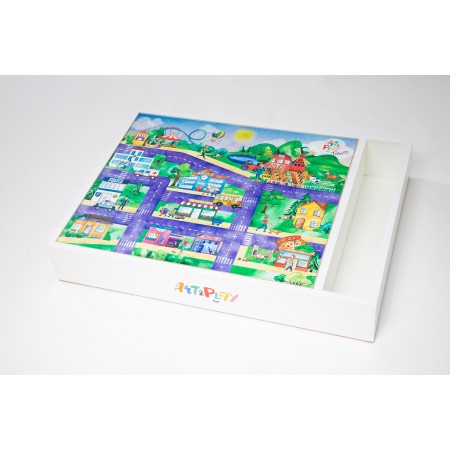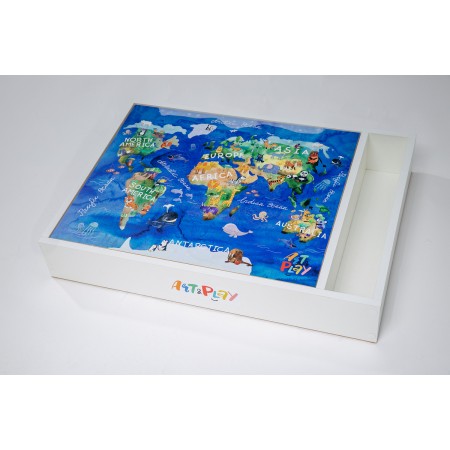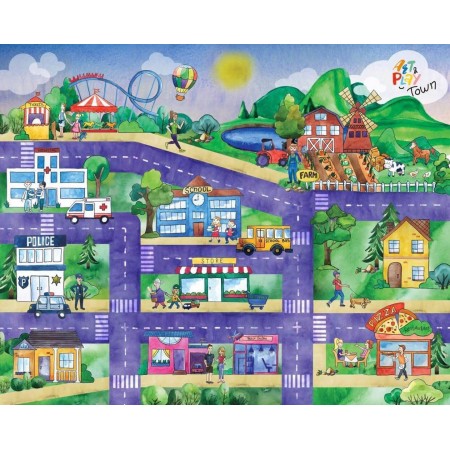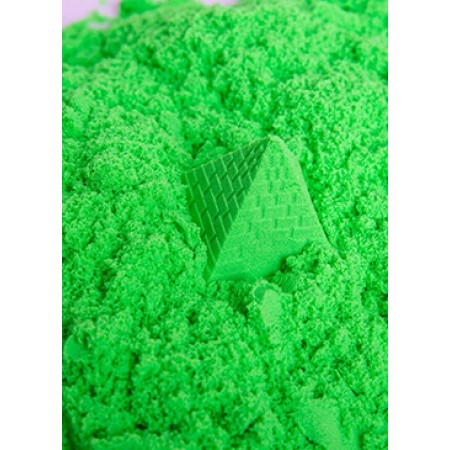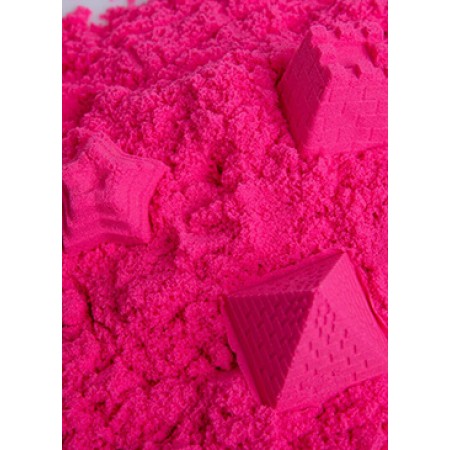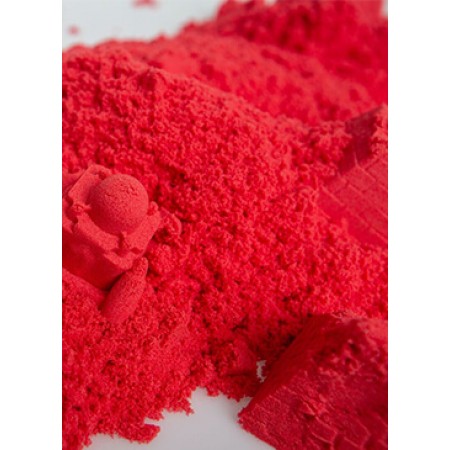A sensory box for craft activity for kids
Today we are talking about one of the popular and useful craft activity for your kid (infants and toddler) – a sensory box.
Beautiful, captivating, developing imagination and fine motor skills, entertaining for a long time, and also an inexpensive toy … What it can be?
We are talking about a sensory box, which any parents can do with their own hands for a child. This simple invention is probably familiar to all of us. Many of today’s adults in childhood loved to sort out grandmother’s baskets with buttons, digging in a jar with fathers nuts and screws, and it’s not worth talking about exciting sandbox games – everyone loved them and now loves them. The sensory box combines all these “charms” – it is a container with loose or liquid filler and game elements of your choice.
How to play with the Art & Play sensory box? 
Kids usually quickly find a way to play with this toy without any adults help. Most of the sensory boxes are filled with something loose, and they can be played the same way as in a sandbox: pour the filler from the container into the container, bury and dig objects. Touching objects with different texture, kids enrich their tactile experience. A variety of games that are applicable to the sensory box can be very diverse. That’s why this toy can be universal and widely used.
What age are sensory boxes for?
The sensory box can be offered to a baby who has already learned to sit up.
Sensory box for children up to a year (from 6-8 months)
The sensory box for infants should not contain small details as they are striving to try everything on a tooth. How to fill the box? You can choose objects according to any ideas (only wooden, or only round, or of the same color). Also, on the contrary, you can offer to the child a full box of various “interesting things”: balls, rags, rattles, soft little animals, cubes. The main thing is that it shouldn’t contain items that swallow or hurt. The sensory box itself should not be very big – a wicker basket, a plastic bowl or a shallow basin is enough for the kids.
The sensory box will definitely attract the infant: a combination of various objects that can be picked up with fingers, shifted, felt, and some also make sounds – rustling, ringing or at least knocking – will not leave the child indifferent.
1-2 years
For children 1-2 years old, who no longer drag everything into their mouths, you can make a sensory box with a smaller (although, preferably, edible) filling: cereals, pasta, and dough.
Of course, the game should be under parents’ control. Now for the game will be useful “tools”: a big spoon, skimmer, shovel, rake, and even tongs.
How to play? Children really like to find objects hidden in the filler of the sensory box. Hide 10-12 toys and ask the child to find them. Suggest your child sort toys by color, size, texture or form in two containers (buckets, plates, jars). Does the child have a good time doing this with his hands? Let them try to repeat, using a spoon or skimmer! During the game with the sensory box a child can study the colors, shapes, and other properties of objects. The sensory box perfectly develops coordination and agility – for example, you can catch fish or other toys from a container filled with water.
2.5-3 years old
With children older than 2.5-3 years, it is already possible to organize real thematic games in a sensory box. You can create different stories with your child, based on preferences and imagination. Does your son love cars and everything related to them? Make a mini-car service or high-speed track. Is your daughter crazy about fairies? Then your option is a fabulous meadow. There are a lot of ideas, just use your imagination and have a good time!

